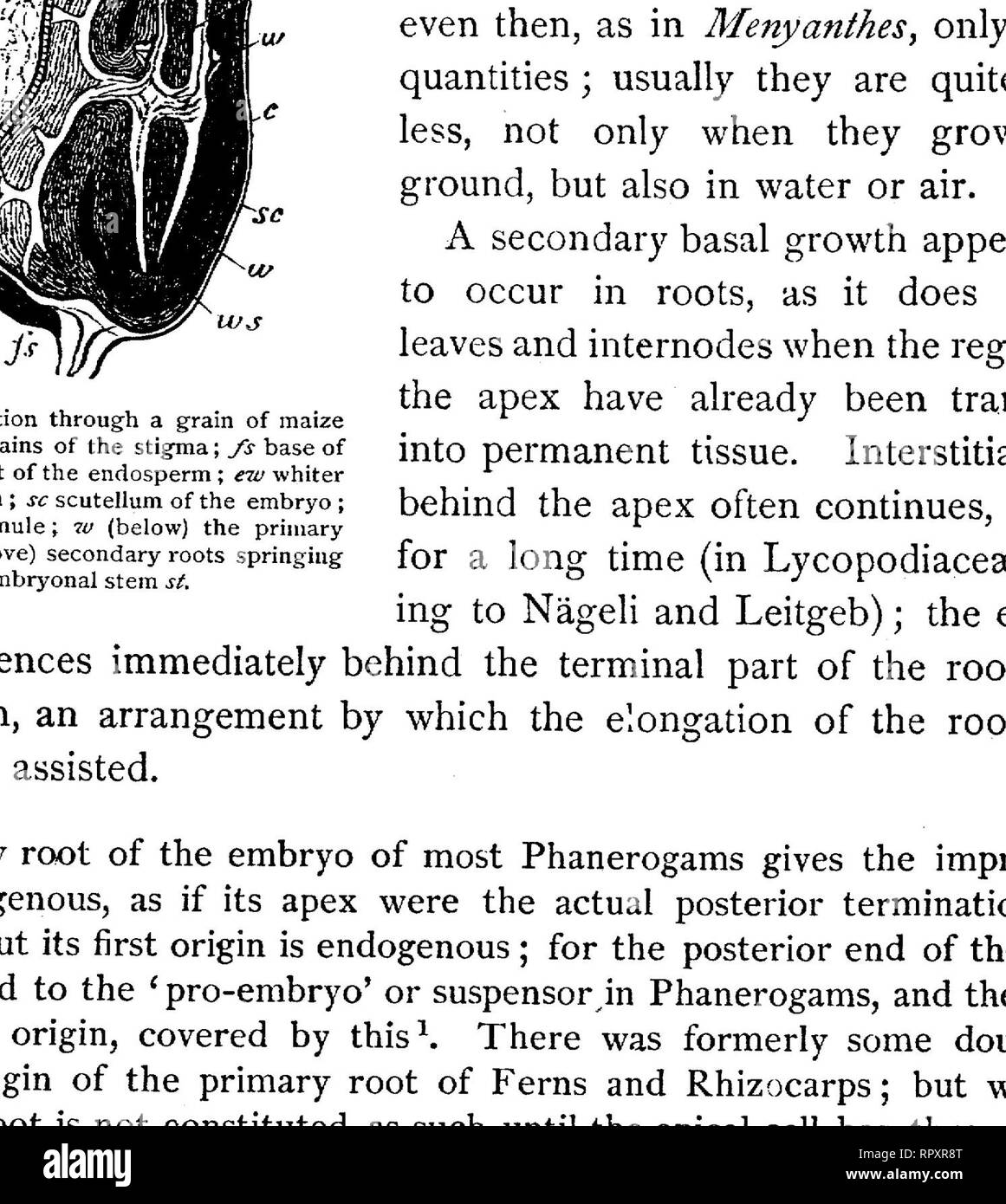. Text-book of botany, morphological and physiological. Botany. ROOT. 167 fibro-vascular bundle, while in Phanerogams they proceed from the pericambium which is enveloped by the plerome-sheath (see Sects. 16, 18). In the Cryptogams named above the new roots originate each from a single primary mother-cell, and there are always particular cells of the plerome-sheath which give rise to the rudiment of a root, while in Phanerogams, on the contrary, several of the pericambial cells take part in the production of each secondary root. Another difference consists in this, that the plane of symmetry o

Image details
Contributor:
Library Book Collection / Alamy Stock PhotoImage ID:
RPXR8TFile size:
7.1 MB (471.7 KB Compressed download)Releases:
Model - no | Property - noDo I need a release?Dimensions:
1494 x 1672 px | 25.3 x 28.3 cm | 10 x 11.1 inches | 150dpiMore information:
This image is a public domain image, which means either that copyright has expired in the image or the copyright holder has waived their copyright. Alamy charges you a fee for access to the high resolution copy of the image.
This image could have imperfections as it’s either historical or reportage.
. Text-book of botany, morphological and physiological. Botany. ROOT. 167 fibro-vascular bundle, while in Phanerogams they proceed from the pericambium which is enveloped by the plerome-sheath (see Sects. 16, 18). In the Cryptogams named above the new roots originate each from a single primary mother-cell, and there are always particular cells of the plerome-sheath which give rise to the rudiment of a root, while in Phanerogams, on the contrary, several of the pericambial cells take part in the production of each secondary root. Another difference consists in this, that the plane of symmetry of the secondary root is, in Cryptogams, at right angles to that of the mother-root, while in Phanerogams (according to Van Tieghem) the two coincide, at least when the mother-root and lateral roots each contain only two vascular bundles. In Ferns, Marsileaceavand Equisetaceae, where the root developes with an apical cell which becomes seg- mented on three sides, and contributes the cap- cells to form the root- cap (Sect. 19), the for- mation of the lateral roots commences with cell-divisions, by which a three-sided pyramidal cell is formed with its base outwards, which be- haves as the mother-cell of the young root. These mother-cells of the la- teral roots lie in the plerome-sheath of the axial bundle, in front of its groups of vessels, and are therefore sepa- rated from the outer- most of these vessels by the pericambium. Further transforma- tions take place sub- sequently in the peri- cambium, in conse- quence of which the fibro-vascular cylinder of the lateral root co- alesces with that of the mother-root. This does not take place, however, in Equisetaceae, where there is no pericambium. In Phanerogams it is also the general rule, as has already been mentioned, for the lateral roots to originate outside the vascular bundles of the mother-root. An excep- tion to this is however, according to Van Tieghem, afforded by Grasses, since these have no pericambium exterior to the va